Top 10 Martin Gardner Obscure Books
-
Logic Machines and Diagrams
(McGraw-Hill, 1958, 9 + 157 pages)
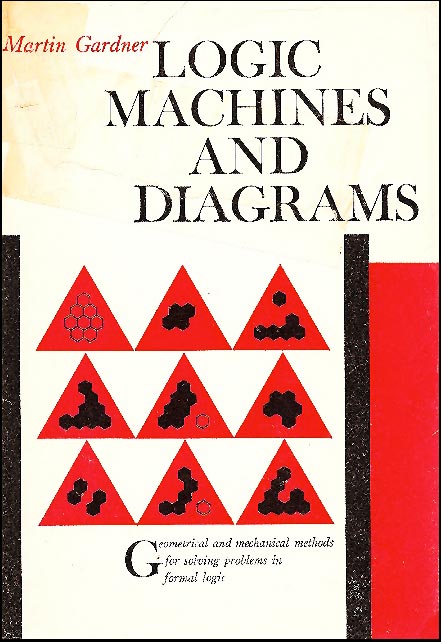
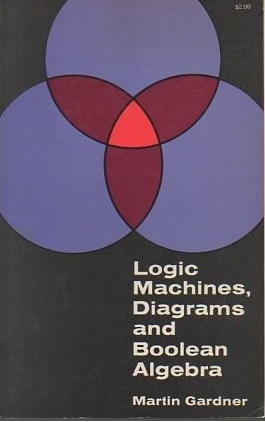
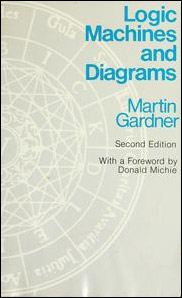
The very first article Martin wrote for Scientific American was "Logic Machines" (Mar 1952, Vol 186, No 3, pages 68–73). It was reviewed by none other than Alonzo Church in J. Symbolic Logic (1952, Vol 17, Issue 3, page 217).
In due course, Martin expanded that article into the second book he wrote, though that didn't appear until after Mathematics, Magic and Mystery (Dover, 1956), which had been written later. The logic book was reviewed by W. Mays in J. Symbolic Logic (1959, Vol 24, Issue 1, pages 78–79).
Dover retitled this as Logic Machines, Diagrams and Boolean Algebra for paperback issue in 1968. A second edition reverted to the original title, had two completely rewritten chapters (including new material on AI), and a foreword by Donald Michie (University of Chicago Press, 1982, 14 + 165).
-
Oddities and Curiosities of Words and Literature by C. C. Bombaugh
(Dover, 1961, 375 pages)
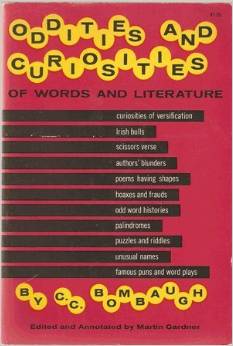
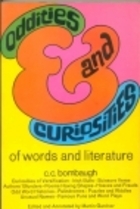
This was "Edited and Annotated by Martin Gardner," based on a book from the 1870s by Charles Carroll Bombaugh. It includes "Curiosities of Versification, Irish Bulls, Scissors Verse, Authors' Blunders, Poems Having Shapes, Hoaxes and Frauds, Odd Word Histories, Palindromes, Puzzles and Riddles, Unusual Names, Famous Puns and Word Plays."
-
Archimedes, Mathematician and Inventor
(MacMillan, 1965, 6 + 42 pages, illustrated by Leonard Everett Fisher)

This was part of the publisher's Science Story Library, aimed at young children. After wrapping up the story with the tale of how 75-year-old Archimedes was killed by a Roman soldier in 212 B.C., Martin concludes with these words:
"The Romans were not much interested in science and mathematics, and more than a thousand years were to go by before there were any scientists as great as Archimedes.
In later life, Martin often echoed the sentiment than great scientists made a deeper impression on world history than kings and generals.The world has long ago forgotten the name of the hot-tempered Roman soldier. It hardly remembers the names of King Hiero and Marcellus, the general.
But the name of Archimedes has never been forgotten. Today, in every country, his great discoveries are known and his name is honored."
-
Never Make Fun of a Turtle, My Son
(Simon & Shuster, 1969, 45 pages, illustrated by John Alcorn)
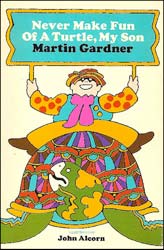
This contains 19 short "morals for children" poems that Martin published in Humpty Dumpty magazine in the 1950s, here appearing on right-hand pages, matched by appropriate artwork on the facing left-hand pages. Titles include Barbershop, Share Toys, Cry-Baby, Speak Clearly, Medicine, Good Sport, Bedtime and Politeness. It was reviewed in the New York Times Book Review by Harry Schwartz.
-
Space Puzzles
(Simon and Schuster, 1971, 95 pages, illustrated by Ted Schroeder)
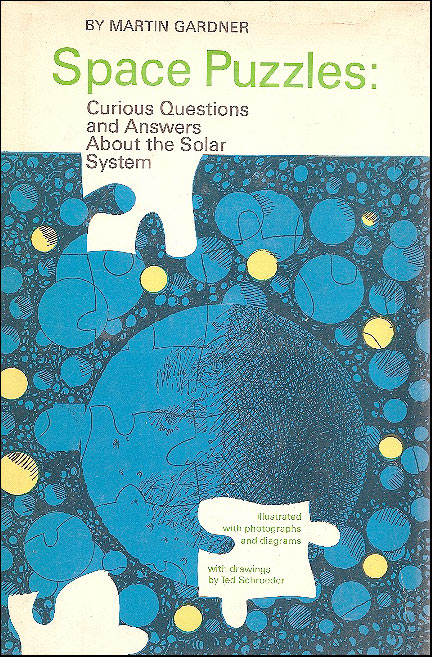
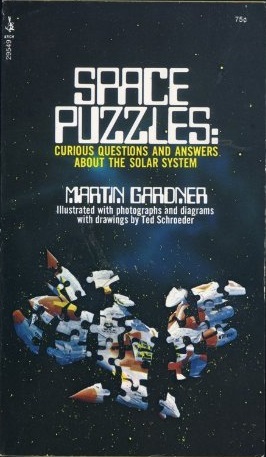
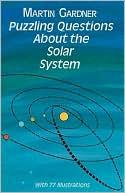
This book, which later resurfaced as Puzzling Questions About the Solar System (Dover, 1997), showcases Martin's deep knowledge of and fascination with the earth, sun, moon, and planets, as well as meteors, comets and asteroids. To put things in perspective, he starts off with the classic question,
"Imagine the earth reduced to the sze of a billiard ball and dried with a towel. You run your fingertips over the surface. Would you be able to feel its mountains and ocean floors?"
-
Codes, Ciphers, and Secret Writing
(Simon and Shuster, 1972, 96 pages).
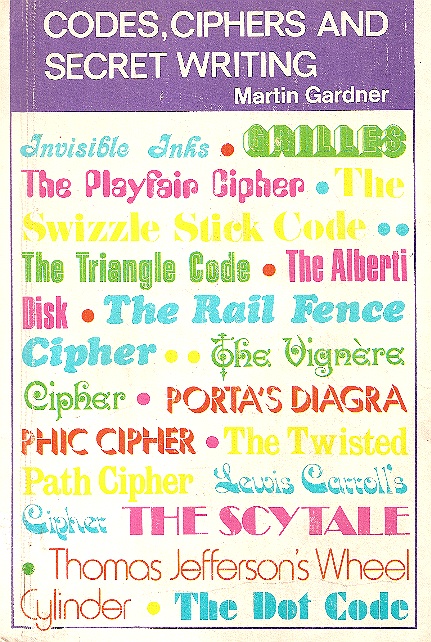
This book, appearing as it did just a few years before cryptography was totally revolutionized by RSA methods—a story Martin himself broke to the general public— had chapters on substitution and polyalphabetic ciphers, in addition to old-fashioned methods including invisible writing.
-
Puzzles From Other Worlds: Fantastical Brainteasers from Isaac Asimov's Science Fiction Magazine
(Vintage, 1984, 12 + 189 pages)
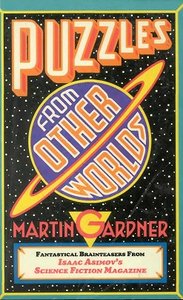
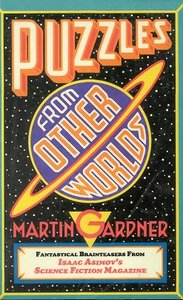
This is the second and least well known of the three batches of the whimsical "puzzle tale" columns that Martin contributed to Isaac Asimov's Science Fiction Magazine between 1977 and 1986. There is great mathematical material hiding in between these covers.
-
How Not to Test a Psychic: Ten Years of Remarkable Experiments With Renowned Clairvoyant Pavel Stepanek
(Prometheus, 1989, 264 pages).

The title says it all. Martin surveys how academics in respectable institutions allowed themselves to be hoodwinked into believing that so-called psychics have special powers, as a result of being blind to basic methods of deception that are well known to conjurors.
-
The Universe in a Handkerchief: Lewis Carroll's Mathematical Recreations, Games, Puzzles, and Word Plays
(Copernicus/Springer-Verlag, 1996, 10 + 158 pages)

Having already explored the Alice and Snark books in great detail, here Martin goes hunting for fun in other works by Carroll, in the chapters Fiction and Verse, The Diaries, Letters, Books and Articles, Miscellaneous Amusements, Doublets, and Pamphlets on Games.
-
Optical Illusion Play Pack (with Gilbert Ford)
(Sterling, 2008, 59 pages)
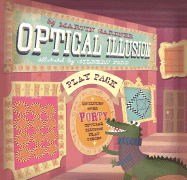
Even in his earliest puzzle collections, Martin had included optical illusions, those being a keen interest of his all his life. A few years before his death, he worked with illustrator Gilbert Ford on this volume. In many ways, it resembled some of the material he published in "Humpty Dumpty" in the 1950s; readers had to cut out and fold paper or cardboard to form props with interesting properties.
One of the 28 items included there is the motion parallax based "Rotating House" illusion, in which a stationary object gives the impression of moving as one walks around it. This has its roots in the work of Martin's friend Jerry Andrus, to whom this book is dedicated, and it reached new heights of effectiveness (and popularity) via the Thinky the Dragon illusion a few years later. (This was highlighted as part of the Martin inspired Mathematics Awareness Month 2014, which includes an explanation of the corresponding mathematics.)